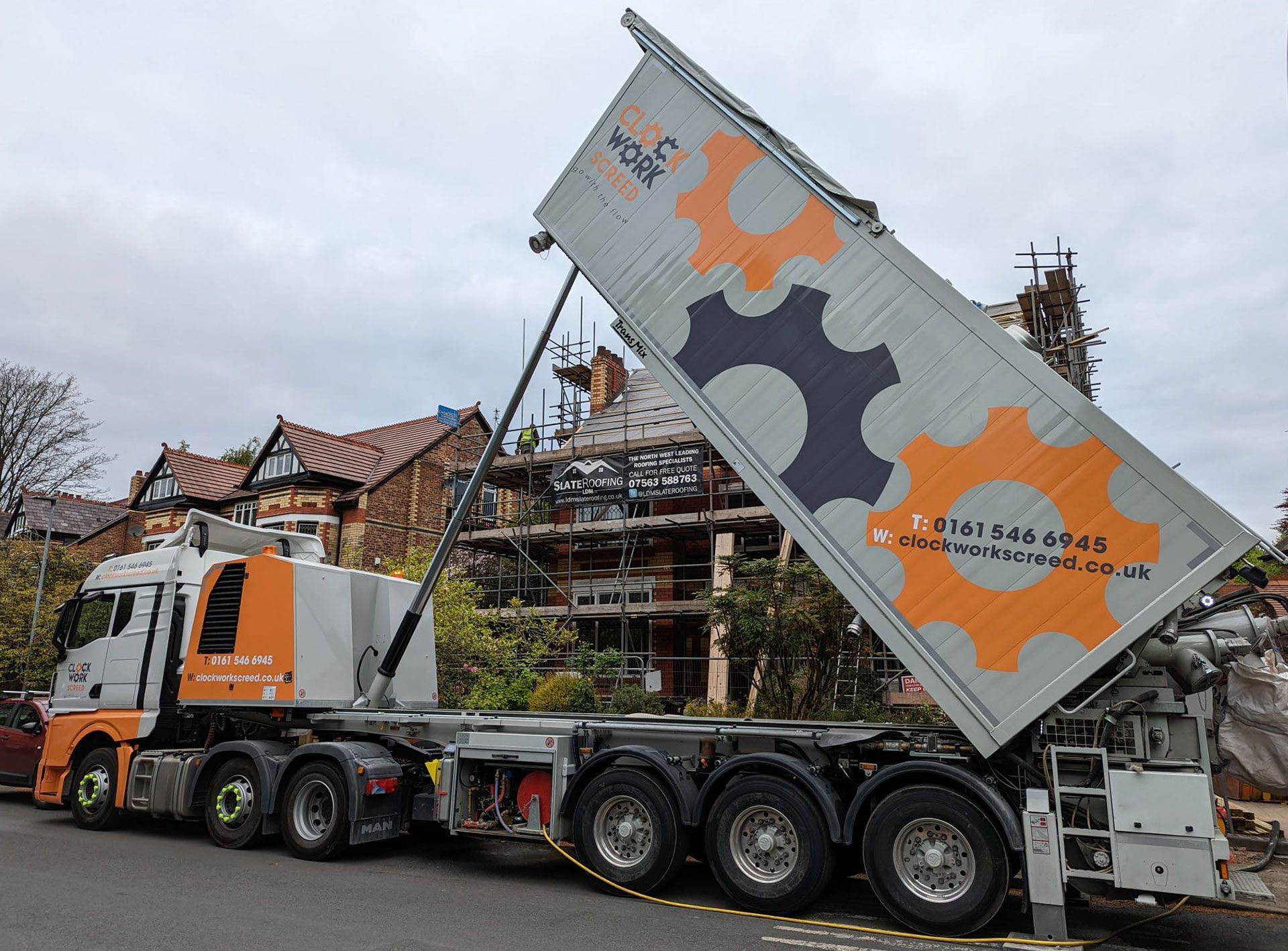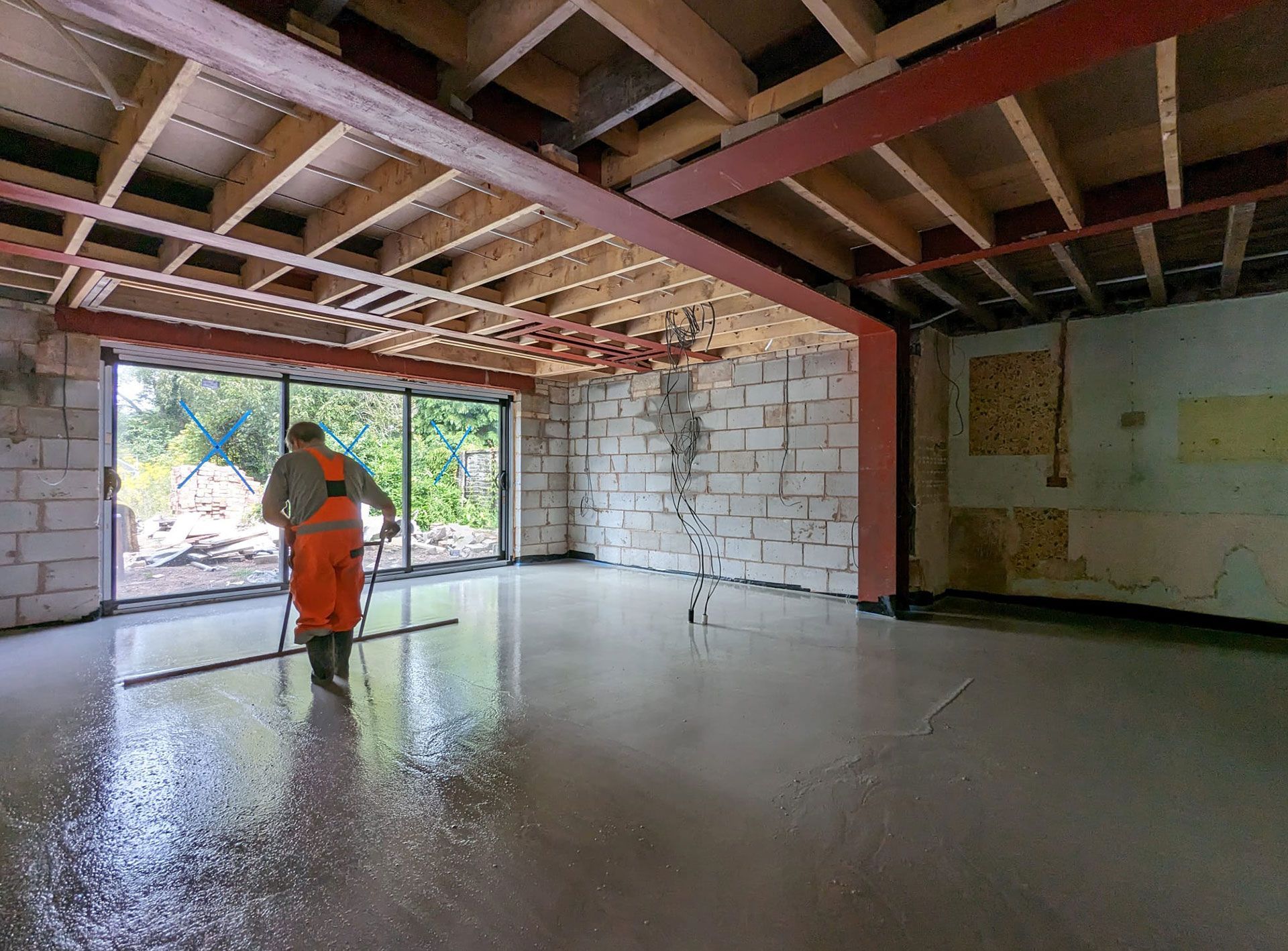Floor screed installation
Floor screed installation is a key process for new build projects and renovations. A smooth, level floor finish is essential for the successful application of a final floor covering such as tiles, laminate, vinyl and carpet.
Whether you are a contractor working on a commercial project, or a homeowner looking to install underfloor heating in your property, our team here at Clockwork Screed has got you covered.

Floor screed installation - an overview
Floor screed is laid on top of a concrete subfloor to create a smooth, durable and level floor. While in most cases a screed floor will be covered with a decorative finish, in the likes of warehouses and other industrial spaces it can be left bare.
Clockwork Screed provides a complete floor screed installation service; we source, deliver and install the screed for construction and renovation projects. We have over thirty years’ experience and expertise in installing floor screed and use state-of-the-art mobile screeding plants which offer a more cost-effective, reliable and screeding floor solution for your project.
Benefits of floor screed
Floor screed is thinner than concrete, and uses half the amount of aggregates that are used in cement which makes it smoother and therefore ideal for levelling floors. Without the floor screed, a concrete floor can be subject to fluctuating temperatures.
Types of floor screed
There are different types of floor screed available:
- Bonded screed is fully bonded to the substrate with a bonding agent, mainly used in spaces where heavy loading is the norm, such as driveways and car parks.
- Floating screed can be installed at around 35mm in depth, increasing the efficiency of a building’s underfloor heating or insulation system.
- Liquid screed, such as Clockwork Screed’s product, is a self-compacting screed that is poured into place and also ideal for underfloor heating systems.
- Unbonded screed is laid on top of a damp-proof membrane on concrete. It helps to reduce the risk of shrinkage, settlement and damp.

Floor preparation
Before installing floor screed you should clean the concrete subfloor and then divide it into 3 or 4 meter wide sections. Long timber battens that have been cut to the height of the layer of screed can be used as dividers.
Installation process and techniques
To screed a floor you need to start from the farthest away section. For liquid screeds you should lay a watertight membrane to avoid leaks when pumped. If you are using a sand and cement screed that is not self-levelling you will need to use a straightedge to level the floor.
Once all your floor sections have been screeded, you can remove the timber battens. You can check for any imperfections straight away and again once the concrete has properly bled. After installation the screed will need to cure for around seven days, or just 24-48 hours for liquid screed.
Maintenance and care
If you leave a screed floor bare you should regularly sweep and mop the floor if you want to maximise its durability. Buffering will also keep it polished and smooth. Any cracks should be dealt with straight away by contacting a floor screed expert such as Clockwork Screed.
Why choose Clockwork Screed for your next project?
It depends on the type of screed, and the size and depth of your floorspace. We can provide a no-obligation quote.
Can floor screed be applied on top of underfloor heating?
Yes, a liquid floor screed is ideal for this.
Can floor screed be installed outdoors?
Yes, our cementitious liquid floor screed can be installed in outdoor areas, even if the space is exposed to wet conditions.
Quality floor screed installation from Clockwork Screed
Get in touch with Clockwork Screed for more information on how our quality floor screed installation process will benefit your project.
For more information or to schedule a consultation, contact Clockwork Screed today.
We are here to help you achieve the perfect floor, free from common mistakes and tailored to your needs.
Read our collection of case studies to see how we have helped our customers.
To calculate how much screed you will need for your project, use our handy
screed calculator







